

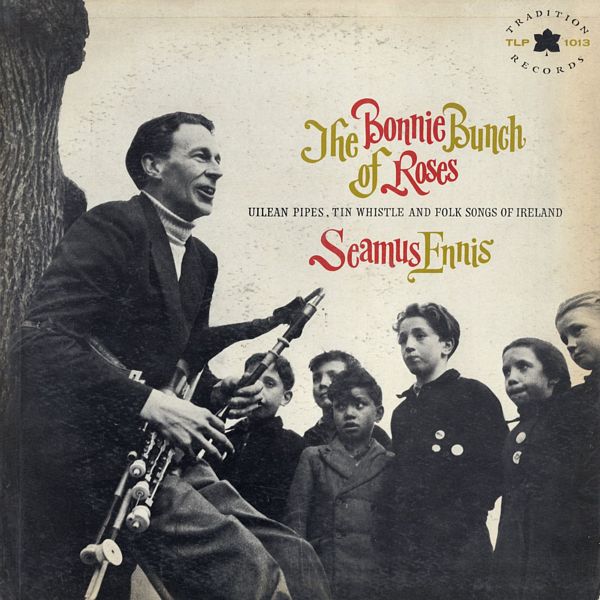 |
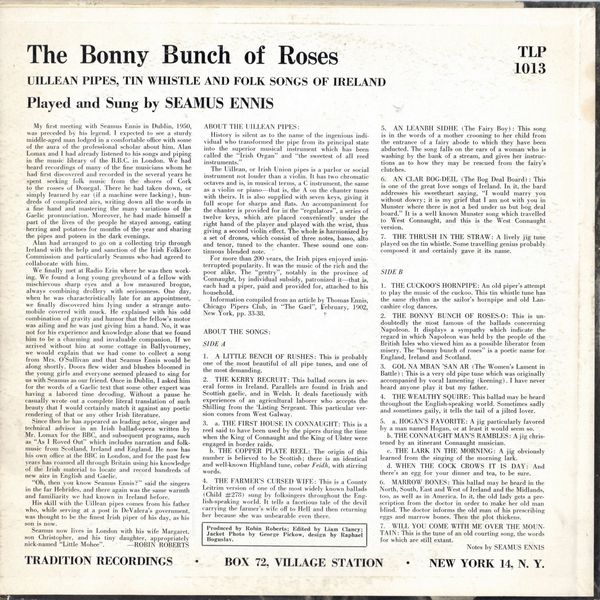
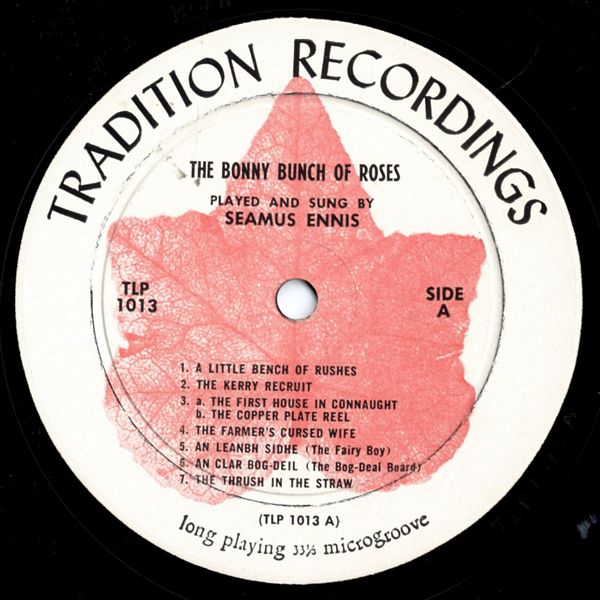
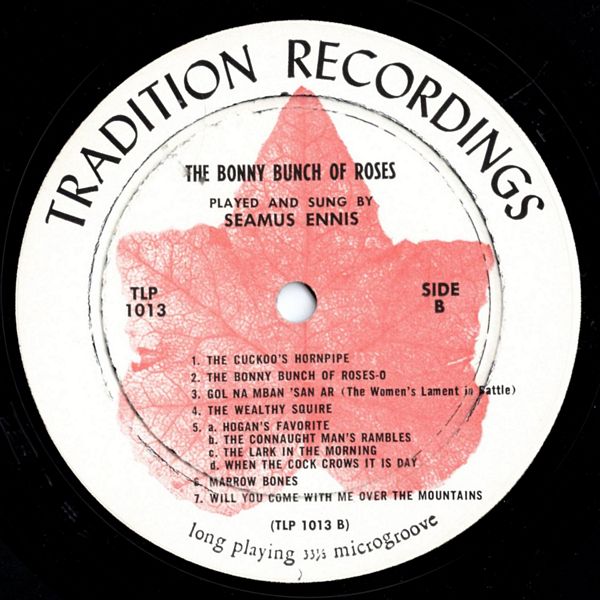
|
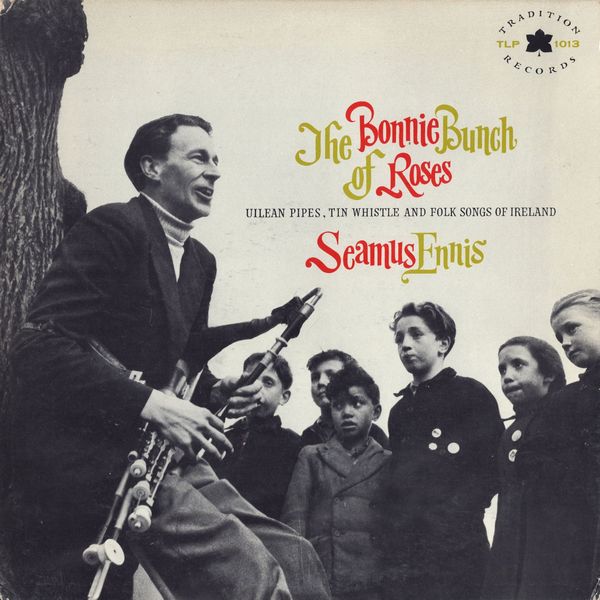
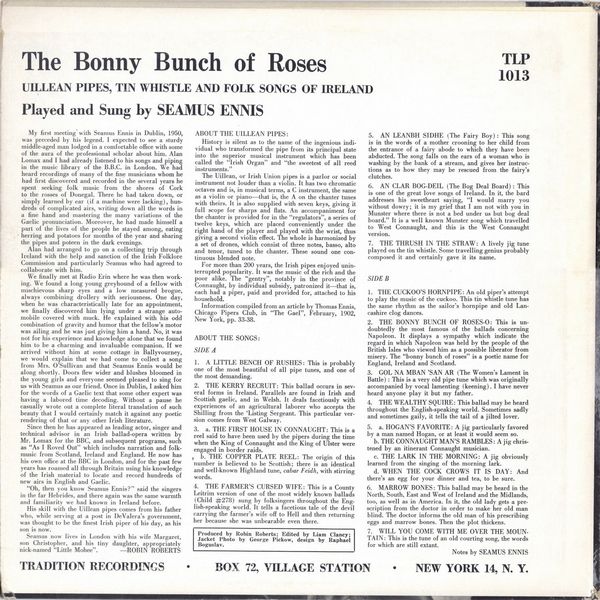
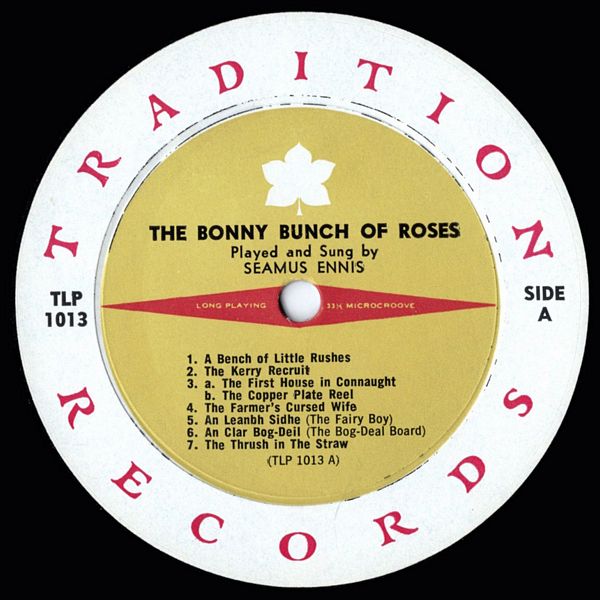
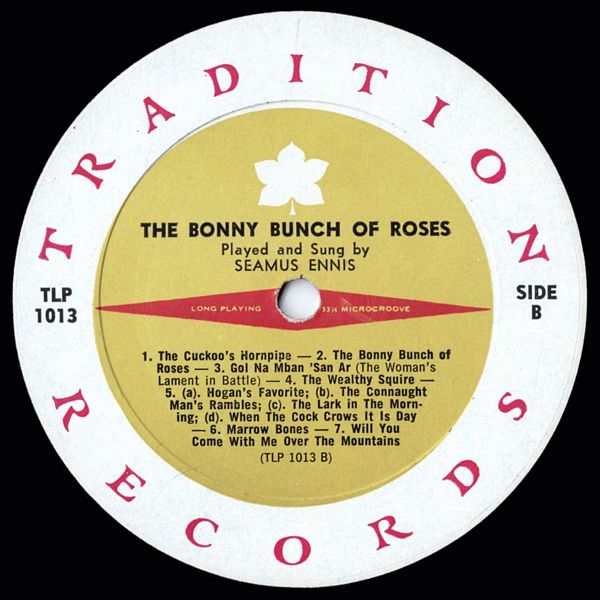
|
Sleeve Notes
My first meeting with Seamus Ennis in Dublin, 1950, was preceded by his legend. I expected to see a sturdy middle-aged man lodged in a comfortable office with some of the aura of the professional scholar about him. Alan Lomax and I had already listened to his songs and piping in the music library of the B.B.C. in London. We had heard recordings of many of the fine musicians whom he had first discovered and recorded in the several years he spent seeking folk music from the shores of Cork to the rosses of Donegal. There he had taken down, or simply learned by ear (if a machine were lacking), hundreds of complicated airs, writing down all the words in a fine hand and mastering the many variations of the Gaelic pronunciation. Moreover, he had made himself a part of the lives of the people he stayed among, eating herring and potatoes for months of the year and sharing the pipes and poteen in the dark evenings.
Alan had arranged to go on a collecting trip through Ireland with the help and sanction of the Irish Folklore Commission and particularly Seamus who had agreed to collaborate with him.
We finally met at Radio Erin where he was then working. We found a long young greyhound of a fellow with mischievous sharp eyes and a low measured brogue, always combining drollery with seriousness. One day, when he was characteristically late for an appointment, we finally discovered him lying under a strange automobile covered with muck. He explained with his odd combination of gravity and humor that the fellow's motor was ailing and he was just giving him a hand. No, it was not for his experience and knowledge alone that we found him to be a charming and invaluable companion. If we arrived without him at some cottage in Ballyvourney, we would explain that we had come to collect a song from Mrs. O'Sullivan and that Seamus Ennis would be along shortly. Doors flew wider and blushes bloomed in the young girls and everyone seemed pleased to sing for us with Seamus as our friend. Once in Dublin, I asked him for the words of a Gaelic text that some other expert was having a labored time decoding. Without a pause he casually wrote out a complete literal translation of such beauty that I would certainly match it against any poetic rendering of that or any other Irish literature.
Since then he has appeared as leading actor, singer and technical advisor in an Irish ballad-opera written by Mr. Lomax for the BBC, and subsequent programs, such as "As I Roved Out" which includes narration and folk-music from Scotland, Ireland and England. He now has his own office at the BBC in London, and for the past few years has roamed all through Britain using his knowledge of the Irish material to locate and record hundreds of new airs in English and Gaelic.
"Oh, then you know Seamus Ennis?" said the singers in the far Hebrides, and there again was the same warmth and familiarity we had known in Ireland before.
His skill with the Uillean pipes comes from his father who, while serving at a post in DeValera's government, was thought to be the finest Irish piper of his day, as his son is now.
Seamus now lives in London with his wife Margaret, son Christopher, and his tiny daughter, appropriately nick-named "Little Mohee".
— ROBIN ROBERTS
ABOUT THE UILLEAN PIPES:
History is silent as to the name of the ingenious individual who transformed the pipe from its principal state into the superior musical instrument which has been called the "Irish Organ" and "the sweetest of all reed instruments."
The Uillean, or Irish Union pipes is a parlor or social instrument not louder than a violin. It has two chromatic octaves and is, in musical terms, a C instrument, the same as a violin or piano — that is, the A on the chanter tunes with theirs. It is also supplied with seven keys, giving it full scope for sharps and flats. An accompaniment for the chanter is provided for in the "regulators", a series of twelve keys, which are placed conveniently under the right hand of the player and played with the wrist, thus Hiving a second violin effect. The whole is harmonized by a set of drones, which consist of three notes, basso, alto and tenor, tuned to the chanter. These sound one continuous blended note.
For more than 200 years, the Irish pipes enjoyed uninterrupted popularity. It was the music of the rich and the poor alike. The "gentry", notably in the province of Connaught, by individual subsidy, patronized it — that is, each had a piper, paid and provided for, attached to his household.
Information compiled from an article by Thomas Ennis, Chicago Pipers Club, in "The Gael", February, 1902, New York. pp. 33-38.
ABOUT THE SONGS:
A LITTLE BENCH OF RUSHES: This is probably one of the most beautiful of all pipe tunes, and one of the most demanding.
THE KERRY RECRUIT: This ballad occurs in several forms in Ireland. Parallels are found in Irish and Scottish gaelic. and in Welsh. It deals facetiously with experiences of an agricultural laborer who accepts the Shilling from the 'Listing Sergeant. This particular version comes from West Galway.
a. THE FIRST HOUSE IN CONNAUGHT: This is a reel said to have been used by the pipers during the time when the King of Connaught and the King of Ulster were engaged in border raids.
b. THE COPPER PLATE REEL: The origin of this number is believed to be Scottish; there is an identical and well-known Highland tune, cabar Feidh, with stirring words.
THE FARMER'S CURSED WIFE: This is a County Leitrim version of one of the most widely known ballads (Child #278) sung by folksingers throughout the English-speaking world. It tells a facetious tale of the devil carrying the farmer's wife off to Hell and then returning her because she was unbearable even there.
AN LEANBH SIDHE (The Fairy Boy): This song is in the words of a mother crooning to her child from the entrance of a fairy abode to which they have been abducted. The song falls on the ears of a woman who is washing by the bank of a stream, and gives her instructions as to how they may be rescued from the fairy's clutches.
AN CLAR BOG-DEIL (The Bog Deal Board): This is one of the great love songs of Ireland. In it. the bard addresses his sweetheart saying, "I would marry you without dowry; it is my grief that I am not with you in Munster where there is not a bed under us but bog deal board." It is a well known Munster song which travelled to West Connaught, and this is the West Connaught version.
THE THRUSH IN THE STRAW: A lively jig tune played on the tin whistle. Some travelling genius probably composed it and certainly gave it its name.
THE CUCKOO'S HORNPIPE: An old piper's attempt to play the music of the cuckoo. This tin whistle tune has the same rhythm as the sailor's hornpipe and old Lancashire clog dances.
THE BONNY BUNCH OF ROSES-0: This is undoubtedly the most famous of the ballads concerning Napoleon. It displays a sympathy which indicate the regard in which Napoleon was held by the people of the British Isles who viewed him as a possible liberator from misery. The "bonny bunch of roses" is a poetic name for England, Ireland and Scotland.
GOL NA MEAN 'SAN AR (The Women's Lament in Battle): This is a very old pipe tune which was originally accompanied by vocal lamenting (keening). I have never heard anyone play it but my father.
THE WEALTHY SQUIRE: This ballad may be heard throughout the English-speaking world. Sometimes sadly and sometimes gaily, it tells the tail of a jilted lover.
a. HOGAN'S FAVORITE: A jig particularly favored by a man named Hogan, or at least it would seem so.
b. THE CONNAUGHT MAN'S RAMBLES: A jig christened by an itinerant Connaught musician.
c. THE LARK IN THE MORNING: A jig obviously-learned from the singing of the morning lark.
d. WHEN THE COCK CROWS IT IS DAY: And there's an egg for your dinner and tea, to be sure.
MARROW BONES: This ballad may be heard in the North, South, East and West of Ireland and the Midlands, too, as well as in America. In it, the old lady gets a prescription from the doctor in order to make her old man blind. The doctor informs the old man of his prescribing eggs and marrow bones. Then the plot thickens.
WILL YOU COME WITH ME OVER THE MOUNTAIN: This is the tune of an old courting song, the words for which are still extant.
Notes by SEAMUS ENNIS